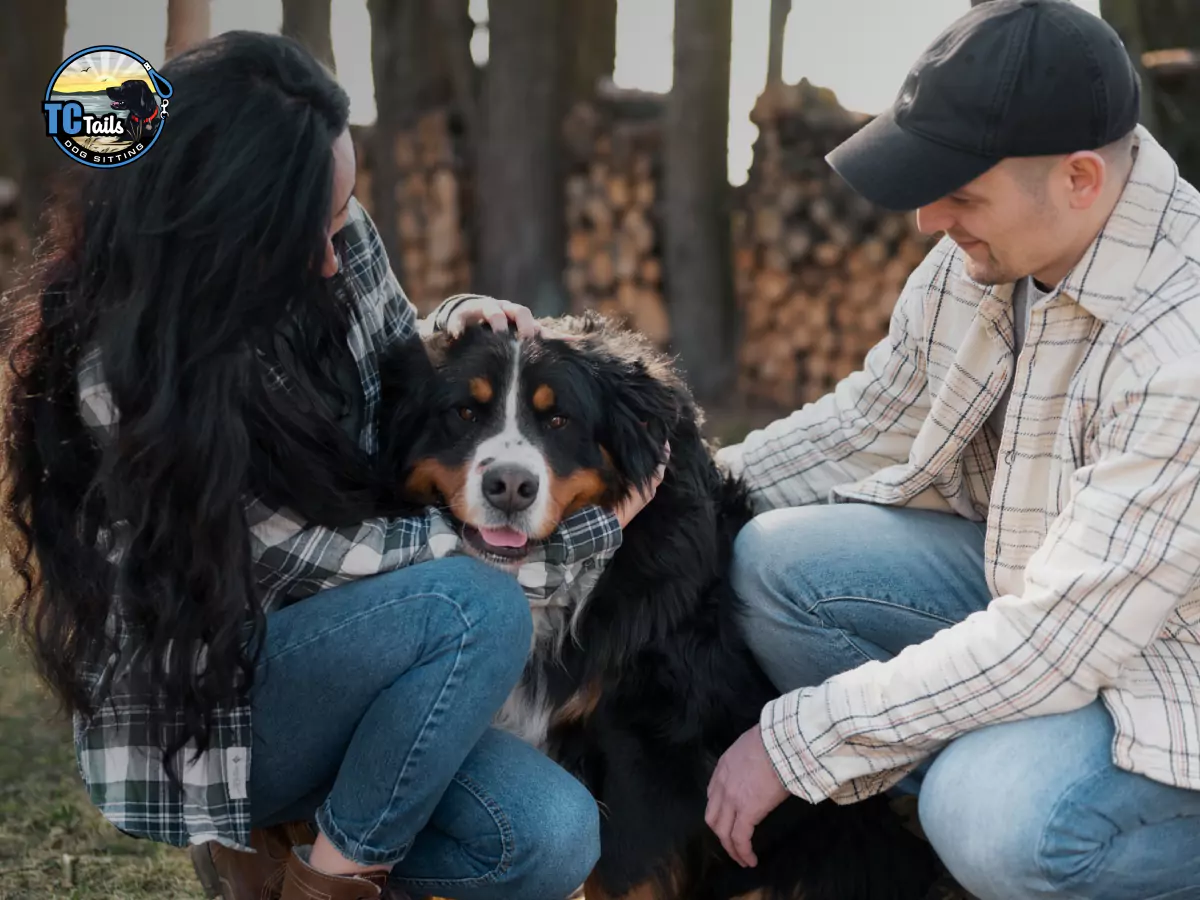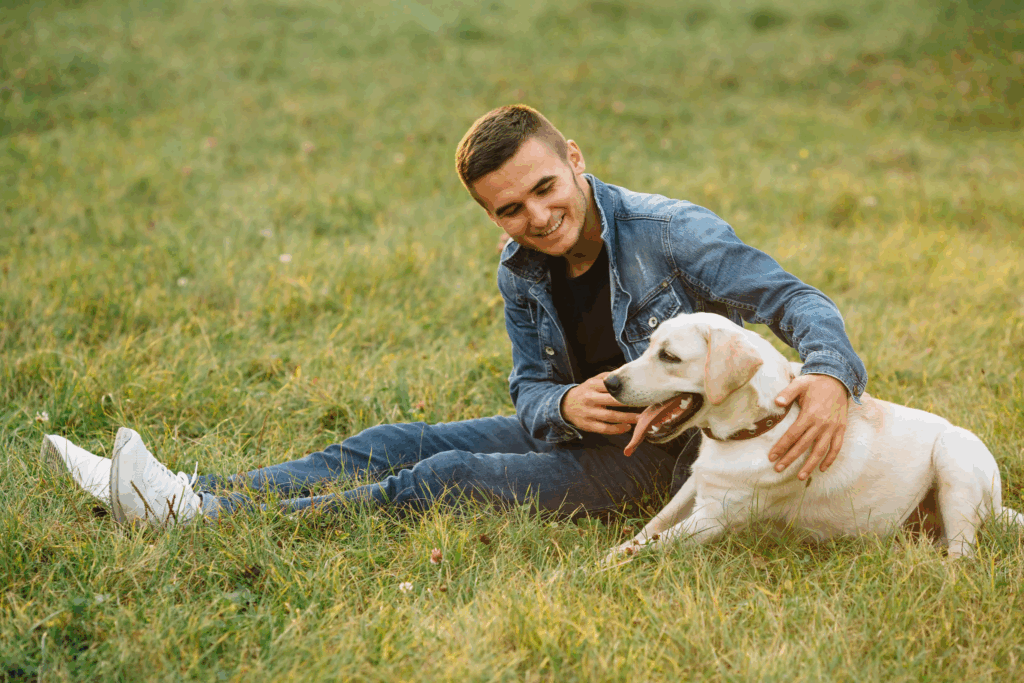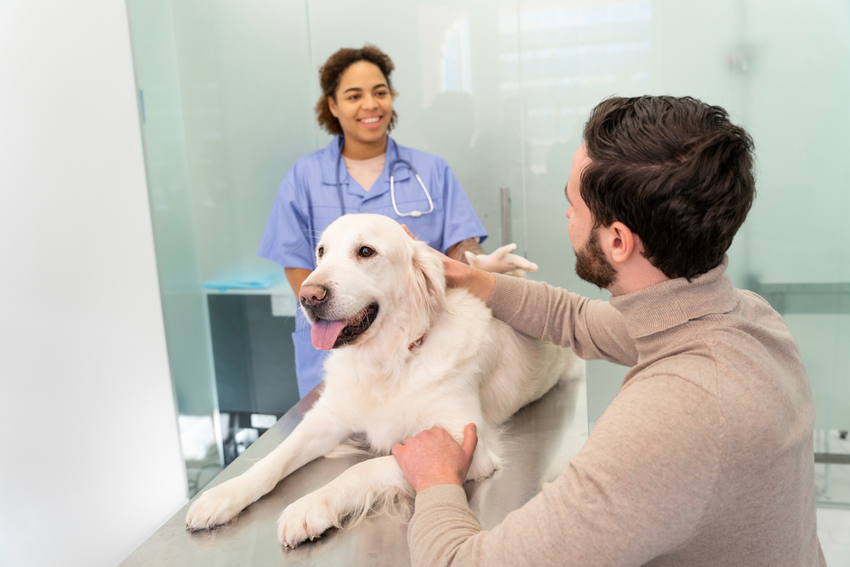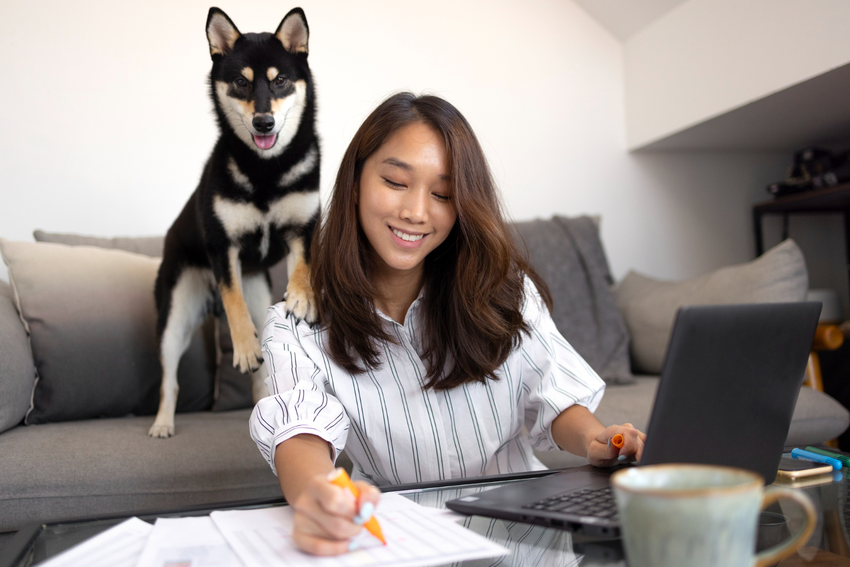The Social Nature of Dogs
When you’re planning a trip or extended work hours, your dog’s wellbeing likely tops your list of concerns. Beyond the basics of food, shelter, and exercise, there’s another crucial element to consider: your dog’s social needs. Dogs are inherently social creatures, having evolved alongside humans for thousands of years. Their pack mentality means they crave interaction, companionship, and consistent social engagement.
Traditional boarding facilities often fall short in meeting these social requirements. While they provide basic care, the environment can be sterile, overwhelming, or simply too different from home. This is where in home dog sitting offers a remarkable alternative. When your dog stays with an in home pet sitter, they receive personalized attention in a comfortable, home-like environment that fosters natural socialization.
In this comprehensive guide, we’ll explore how in home dog boarding creates valuable social opportunities for your furry friend. We’ll examine why these interactions matter, how they occur, and the lasting benefits they provide. From building confidence to reducing separation anxiety, the social advantages of choosing dog sitters at their home go far beyond simple convenience.
Let’s dive into the world of canine socialization and discover how the right sitting arrangement can transform your dog’s time away from you into a socially enriching experience they might even look forward to!
Read More About 15 Must-Ask Questions Before Hiring an In-Home Pet Sitter for Your Dog
Understanding Your Dog’s Social Needs
Dogs, much like humans, have complex social requirements that significantly impact their overall wellbeing. These social needs aren’t just “nice-to-have” elements—they’re fundamental to your pet’s psychological health.
The Science Behind Canine Socialization
Research in canine behavior consistently shows that dogs require regular social interaction to maintain optimal mental health. When dogs engage with other animals and humans, their brains release oxytocin—often called the “love hormone”—which reduces stress and strengthens social bonds. This biochemical response explains why properly socialized dogs tend to be more relaxed, confident, and well-adjusted.
Here’s the thing: these social needs don’t disappear when you leave town. In fact, they often become more pronounced. Your absence creates a void that needs appropriate filling, preferably with meaningful social interaction rather than isolation.
How Different Boarding Options Address Social Needs
Traditional kennels often provide limited social opportunities. While some offer “playgroup” sessions, these are typically brief and conducted in artificial environments. The majority of your dog’s time may be spent in a kennel run with minimal meaningful interaction.
By contrast, in home pet boarding creates natural opportunities for socialization throughout the day. When staying with at home pet sitters, your dog becomes part of the household rhythm. They might greet visitors, interact with the sitter’s pets (if any), and experience the normal flow of a home environment—all valuable social experiences.
Ready to See the Difference? Your dog deserves more than just basic care while you’re away. They deserve the rich social experiences that only in-home sitting can provide. |
Signs Your Dog Needs More Social Interaction

Not sure if your dog is getting enough socialization? Watch for these telling signs:
- Excessive excitement when meeting other dogs
- Destructive behavior when left alone
- Unusual barking or vocalization
- Clingy behavior or separation anxiety
- Depression-like symptoms after periods of isolation
- Restlessness or pacing around the house
If you’ve noticed any of these signs, choosing dog sitters at their home near me might be exactly what your furry friend needs to thrive during your absence.
Now that we understand the importance of canine socialization, let’s explore how in home dog sitting specifically creates these valuable social opportunities.
The Home Environment Advantage
One of the most significant benefits of in home dog boarding is the natural home setting it provides. This environment offers distinct advantages for socialization that institutional settings simply cannot match.
Familiar Routines in a Home Setting
Dogs thrive on routine and predictability. When staying in someone’s home rather than a facility, your pet experiences a setting that’s much closer to what they’re accustomed to. The rhythm of daily life—morning coffee, evening television, regular mealtimes—creates a sense of normalcy that helps your dog feel secure enough to engage socially.
Within this comfortable framework, your dog can focus on forming new connections rather than simply coping with an unfamiliar, institutional environment. The difference is substantial: think of how differently you behave in a hospital versus someone’s home. The same principle applies to your pet.
Natural Socialization Opportunities
At home dog sitters don’t need to create artificial socialization periods—they happen organically throughout the day. Your dog might:
- Greet mail carriers and delivery people
- Meet neighbors during walks
- Interact with the sitter’s friends or family who visit
- Observe and participate in normal household activities
- Potentially socialize with resident pets in a natural setting
These interactions occur within the context of normal life, making them more meaningful and less stressful than forced socialization sessions in commercial settings.
The Comfort Factor’s Impact on Social Behavior
When dogs feel comfortable and secure, they display more natural social behaviors. In the relaxed setting of in home pet sitting, your dog can express their true personality rather than exhibiting stress-induced behaviors that mask their normal social tendencies.
This comfort factor means sitters can observe and nurture your dog’s unique social style—whether they’re boisterous greeters, cautious observers, or something in between. This personalized approach simply isn’t possible in facilities handling dozens of animals simultaneously.
What does this mean for you? A dog who returns home socially fulfilled rather than stressed or shutdown—a difference you’ll notice immediately in their demeanor and behavior.
Now let’s explore how these social interactions actually unfold during an in home dog sitting stay.
Give your dog the comfort of home while you’re away! Book an in-home stay with our experienced sitters.
Read More About The Dog Sitter’s Playbook: Activities to Keep Your Pup Happy
Building Relationships with Sitters
The cornerstone of successful in home pet boarding is the relationship between your dog and their sitter. This one-on-one connection offers profound social benefits that extend well beyond basic care.
The Sitter as Primary Companion
Unlike kennel settings where staff members rotate and responsibilities are divided, at home pet sitters serve as your dog’s primary companion throughout their stay. This consistency allows for the development of genuine bonds and mutual understanding.
Professional dog sitters at their home quickly learn your pet’s unique communication style—what different barks mean, which tail wags indicate happiness versus anxiety, and how your dog signals their needs. This deep understanding creates a social relationship that meets your dog’s need for companionship in your absence.
Creating Trust Through Daily Interaction
Trust forms the foundation of all healthy social relationships, including those between dogs and their temporary caretakers. During an in home dog sitting stay, this trust develops through:
- Consistent feeding routines
- Reliable bathroom breaks
- Respecting your dog’s personal space
- Reading and responding to stress signals
- Engaging in play that matches your dog’s style
- Providing affection in ways your dog appreciates
Each positive interaction strengthens this trust, creating a social relationship that helps your dog feel secure even when you’re far away.
Want to Learn More About Our Approach? Our pet professional understands the importance of socialization for your dog’s wellbeing. |
Long-Term Benefits of Repeat Sitter Relationships
Many pet parents discover an unexpected benefit of in home pet boarding: the opportunity for their dog to form long-term relationships with specific sitters. When you use the same sitter repeatedly, your dog develops a relationship similar to that with a favorite human “aunt” or “uncle”—someone they genuinely look forward to seeing.
“My dog literally jumps for joy when she sees our regular sitter’s car pull up,” reports one TC Tails client. “It completely eliminates my guilt about leaving because I know she’s excited for her ‘vacation’ with her friend.”
These enduring social connections add an extra dimension to your dog’s social network, enriching their life even when you’re home.
Let’s now examine how interactions with other animals during in home dog sitting stays contribute to your pet’s social development.
Interacting with Resident Pets

Many dog sitters at their home near me have resident pets, creating opportunities for multi-species socialization that benefit your dog in numerous ways.
Supervised Canine Friendships
When your dog stays with sitters who have their own dogs, carefully managed introductions can lead to rewarding friendships. Unlike dog park interactions that might be brief and chaotic, these relationships develop gradually under supervision, allowing dogs to establish healthy boundaries and communication patterns.
Professional in home dog sitters know how to facilitate these relationships safely, ensuring compatible play styles and preventing resource guarding issues. The result? Your dog forms genuine friendships that can last for years through repeat visits.
Cross-Species Socialization
Some in home pet sitting providers also have cats, birds, or other pets. These cross-species interactions teach your dog valuable adaptability skills and broader social understanding. Learning to respect the boundaries of different animal species enhances your dog’s overall behavior and ability to navigate diverse social situations.
Even if your home doesn’t have multiple species, this exposure helps your dog become more well-rounded socially. Cats, in particular, teach dogs patience and respect for different communication styles—valuable lessons that transfer to other relationships.
Social Learning Through Observation
Dogs learn tremendous amounts through observation—a fact that makes the multi-pet household of many at home dog sitters an excellent learning environment. Your pet might observe:
- How resident dogs respond to household routines
- Appropriate reactions to visitors
- Calm behavior during storms or other stressful events
- Boundaries established by the human household members
This social learning happens naturally, without formal training sessions. Your dog simply absorbs the household culture through daily observation, often adopting positive behaviors from well-adjusted resident pets.
These social learning opportunities represent a significant advantage of in home dog boarding over traditional kennels, where observation opportunities are limited to other stressed boarding dogs rather than pets comfortable in their environment.
Read More About The Future of Pet Sitting: AI, Virtual Check-Ins & More!
Neighborhood Socialization During Walks
Daily walks with in home pet sitters provide crucial socialization that extends beyond the home environment, introducing your dog to the broader community in positive ways.
Routine Walking Routes and Familiar Faces
When staying with at home dog sitters, your pet typically explores established walking routes in residential neighborhoods. These paths often include regular encounters with:
- Friendly neighbors who consistently greet dogs
- Local business owners who offer treats
- Other dog walkers following similar schedules
- Children who enjoy interacting with passing pets
These recurring encounters create pleasant anticipation and teach your dog that the wider world contains friendly faces—an important aspect of socialization that builds confidence.
Controlled Greetings and Social Learning
Professional in home dog boarding providers understand the importance of managing greetings properly during walks. They ensure:
- Your dog sits before greeting excited humans
- Leash greetings with other dogs remain brief and positive
- Your pet learns to disengage from over-stimulating interactions
- Appropriate distance is maintained from fearful or reactive dogs
These carefully managed social experiences teach valuable skills that transfer to all of your dog’s future interactions. The consistent, daily nature of these walks provides regular practice that reinforces good social habits.
Exploring New Environments Safely
Many dog sitters at their home incorporate varied destinations into their walking routines, exposing your pet to different environments under safe supervision. Your dog might visit:
- Quiet parks for peaceful exploration
- Pet-friendly businesses for novel socialization
- Different neighborhoods with unique sights and sounds
- Natural areas with interesting scents and textures
This environmental enrichment, combined with social interaction, creates a comprehensive socialization experience that keeps your dog mentally stimulated throughout their stay.
Now that we’ve considered how your dog socializes outside the sitter’s home, let’s examine the social benefits they experience with human visitors during their stay.
Want your dog to enjoy enriching walks and socialization? Reserve your in-home sitting stay today!
Interacting with Visitors and Family Members
The household of in home dog sitting providers typically welcomes various visitors, creating diverse social opportunities for your pet in a controlled environment.
Meeting Different Types of People

During a stay with at home pet sitters, your dog might interact with a variety of visitors:
- Family members of different ages
- Friends with varying comfort levels around dogs
- Service professionals like plumbers or electricians
- Delivery personnel making regular stops
These interactions expose your dog to people with different voices, movements, and energy levels—all valuable for building their social confidence and adaptability. For dogs who primarily interact with the same household members at home, this variety provides important social enrichment.
Learning Appropriate Greeting Behaviors
Professional in home dog boarding providers consistently reinforce appropriate greeting behaviors when visitors arrive. Your dog learns invaluable social skills like:
- Sitting calmly when the doorbell rings
- Waiting for permission before approaching guests
- Accepting gentle petting without jumping
- Disengaging when social time ends
These lessons carry over when you return home, often resulting in improved behavior with your own visitors—an unexpected benefit many pet parents report after using dog sitters at their home near me.
Building Confidence with New People
For dogs who tend toward shyness or caution around strangers, the controlled introductions possible during in home pet sitting stays can build lasting confidence. Sitters can manage interactions to ensure:
- Visitors don’t overwhelm your dog with attention
- Treats and praise reward calm curiosity
- Your dog can observe new people from a comfortable distance
- Positive associations form with visitor arrivals
This gradual confidence-building approach helps shy dogs expand their social comfort zones without the pressure of forced interaction that might occur in busier environments.
Let’s next examine how modern in home dog sitting providers use technology to enhance the social experience for both dogs and their owners.
Technology and Social Updates
Today’s professional in home pet boarding providers leverage technology to enhance the social experience, keeping you connected to your pet even when physically separated.
Photo and Video Updates
Most dog sitters at their home now provide regular photo and video updates showing your dog engaged in various activities:
- Playing with resident pets
- Exploring during walks
- Cuddling during quiet time
- Interacting with household members
These visual updates do more than just reassure you—they document your dog’s social experiences and allow you to see their comfort level in real-time. Many pet parents treasure these glimpses into their dog’s “secret life” away from home.
Video Calls and Voice Recognition
Some in home dog sitting services offer scheduled video calls that allow you to interact with your pet virtually. Dogs readily recognize their owners’ voices, and these brief connections can:
- Reassure anxious pets
- Maintain your bond during separation
- Give you peace of mind seeing your dog’s demeanor
- Create a three-way social connection between you, your pet, and the sitter
These technological touches bridge the distance without disrupting your dog’s adjustment to the sitter’s home.
Social Media Communities
Many at home pet sitters maintain private social media groups where clients can see updates about their pets and others in the sitter’s care. These communities create:
- A sense of extended family among regular clients
- Opportunities to see your dog’s “friends” when they visit
- A support network of like-minded pet parents
- Continuing social connections even between stays
This technological extension of community represents a modern evolution of traditional pet care, one that embraces our connected world while maintaining the warm, personal touch of home-based care.
With these social technologies in mind, let’s explore the lasting benefits your dog gains from these rich social experiences.
Give Your Dog the Gift of Friendship Don’t leave your dog in isolation during your next trip. Choose the social benefits of in-home sitting with TC Tails. |
Long-Term Benefits for Your Dog’s Social Development
The socialization opportunities provided by in home dog boarding create lasting positive effects that extend well beyond each individual stay.
Building Confidence Through Positive Experiences
Dogs who regularly enjoy in home pet sitting develop confidence from successfully navigating different social situations. This confidence manifests as:
- Reduced anxiety in new environments
- Appropriate greeting behaviors with strangers
- Calmer responses to unexpected situations
- Greater adaptability when routines change
These confidence-building experiences create a more resilient, well-adjusted pet who can take life’s changes in stride—a benefit that enriches both your dog’s life and your own.
Reducing Separation Anxiety
Dogs prone to separation anxiety often benefit significantly from relationships with consistent dog sitters at their home. The security of these relationships helps your dog understand that:
- Your absence is temporary
- They are safe and cared for even when you’re away
- Other humans can reliably meet their needs
- Their world remains stable despite changes
Many pet parents report decreased separation issues after establishing regular relationships with in home dog sitters, as their pets develop secure attachments beyond the primary owner.
Transferable Social Skills
The social skills your dog develops during in home pet boarding transfer to other situations in their daily life:
- Better behavior during veterinary visits
- More appropriate interactions at dog parks
- Calmer responses to house guests
- Improved coexistence with other household pets
This skill transfer represents perhaps the most valuable long-term benefit of choosing at home dog sitters who prioritize socialization as part of their care approach.
“My formerly shy rescue dog now confidently greets visitors after several stays with our in-home sitter,” shares another TC Tails client. “The change in his overall demeanor is remarkable—it’s like he finally understood how to be a dog in a human world.”
Read More About Why Pet Sitting Services Are Essential for Your Furry Friends
Choosing the Right In-Home Sitter for Social Benefits
Not all in home dog sitting services place equal emphasis on socialization. Here’s how to find a provider who will maximize these benefits for your pet.
Evaluating a Sitter’s Social Philosophy
When researching potential dog sitters at their home near me, look for those who explicitly mention socialization in their service descriptions. Ask targeted questions about:
- Their approach to introducing new dogs to their household
- How they handle shy or anxious pets
- The typical daily social interactions your dog might experience
- Their policies on walks and community engagement
The answers will reveal whether socialization is a thoughtful, intentional part of their care philosophy or merely an afterthought.
Meeting Resident Pets
Before booking in home pet boarding, arrange a meet-and-greet that includes any resident pets. This introduction allows you to:
- Observe the home environment firsthand
- See how the sitter manages introductions
- Gauge compatibility between your dog and resident animals
- Assess the overall energy and vibe of the household
This preliminary meeting often predicts how successful the social aspects of the stay will be, as you’ll witness the sitter’s handling skills and your dog’s comfort level in real-time.
Communication About Social Needs
Clear communication about your dog’s specific social preferences and needs is essential. Be sure to discuss:
- How your dog typically responds to new dogs and people
- Any particular triggers or sensitivities
- Your goals regarding socialization during the stay
- Previous positive or negative social experiences
Professional in home dog sitters will use this information to tailor social opportunities to your pet’s unique temperament and developmental needs.
Conclusion: A Socially Fulfilled Canine Companion
When you choose quality in home dog sitting, you’re providing far more than just basic care during your absence. You’re offering your dog rich social opportunities that contribute to their overall wellbeing and development.
From forming meaningful relationships with sitters to enjoying the company of resident pets, your dog experiences valuable socialization in a comfortable, low-stress environment. These interactions teach important skills, build confidence, and create positive associations that last long after you’ve returned.
Unlike traditional kennels where socialization might be limited or forced, in home dog boarding provides natural, organic opportunities for your dog to engage with the world around them. The home setting itself creates a foundation of security that allows your pet to make the most of these social experiences.
As you plan your next trip or work commitment, consider how dog sitters at their home near me might enhance your pet’s life through these social benefits. The right sitting arrangement doesn’t just maintain your dog’s wellbeing in your absence—it actively contributes to their social growth and happiness.
Ready to give your dog the social benefits of in-home sitting?
Contact TC Tails today to learn more about our personalized approach to pet care!
FAQs
How far in advance should I book an in-home sitter, especially during peak holiday seasons?
For regular weekends, booking 2-3 weeks in advance is usually sufficient. For major holidays like Christmas, Thanksgiving, or summer holidays, we recommend booking 2-3 months ahead. Popular in-home sitters often maintain waitlists and give priority to regular clients, so establishing a relationship with a sitter before major holidays is advantageous.
Can in-home sitters accommodate dogs with special needs or medical conditions?
Yes, many in-home sitters specialize in caring for dogs with special needs. Whether your dog requires medication administration, mobility assistance, or specialized feeding routines, discuss these needs during your initial consultation. Some sitters charge additional fees for medical care, such as insulin injections or complicated medication schedules. Always be transparent about your dog’s health conditions.
Will my dog have access to outdoor space during their stay?
Most in-home sitters provide some form of outdoor access, but this varies by location. Some have fenced yards where dogs can play freely, while others may have shared courtyards or rely primarily on leashed walks. During your meet-and-greet, ask to see the outdoor spaces available and discuss how often your dog will be taken outside based on their typical routine.
How do in-home sitters handle dogs with specific dietary requirements?
Professional in-home sitters are accustomed to following detailed feeding instructions. They can accommodate special diets, including raw feeding, prescription foods, or homemade meals. Bring pre-measured portions if your dog’s diet requires precise measurements, and always provide extra food in case your return is delayed. For dogs with severe food allergies, inform the sitter about which treats are safe.
What measures do sitters take to ensure the safety of my dog in their home?
Experienced in-home sitters dog-proof their homes similarly to how you might childproof. This includes securing toxic substances, blocking access to dangerous areas, covering electrical cords, and removing choking hazards. Many sitters have pet gates to restrict access to certain areas and crates available for dogs who are crate-trained. During your meet-and-greet, ask for a tour and point out any safety concerns specific to your dog.
Can in-home sitters take care of other pets I have besides dogs?
Many in-home sitters are comfortable caring for multiple species. If you need care for both dogs and cats, birds, small mammals, or reptiles, discuss this during your initial inquiry. Some sitters specialize in multi-pet households and can maintain your pets’ routines with minimal disruption. Multi-pet care usually involves additional fees, but is often more affordable than separate arrangements for each pet type.



